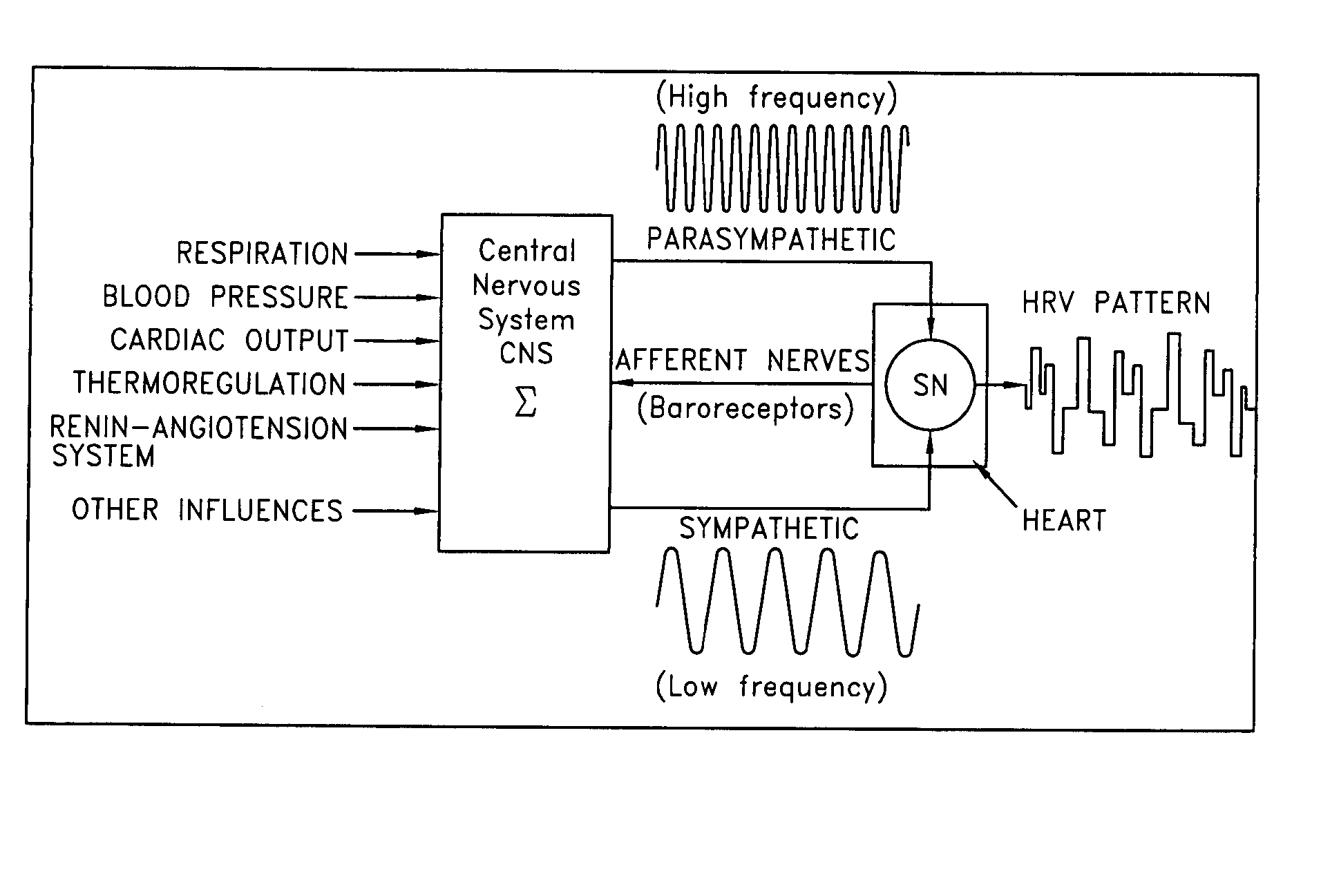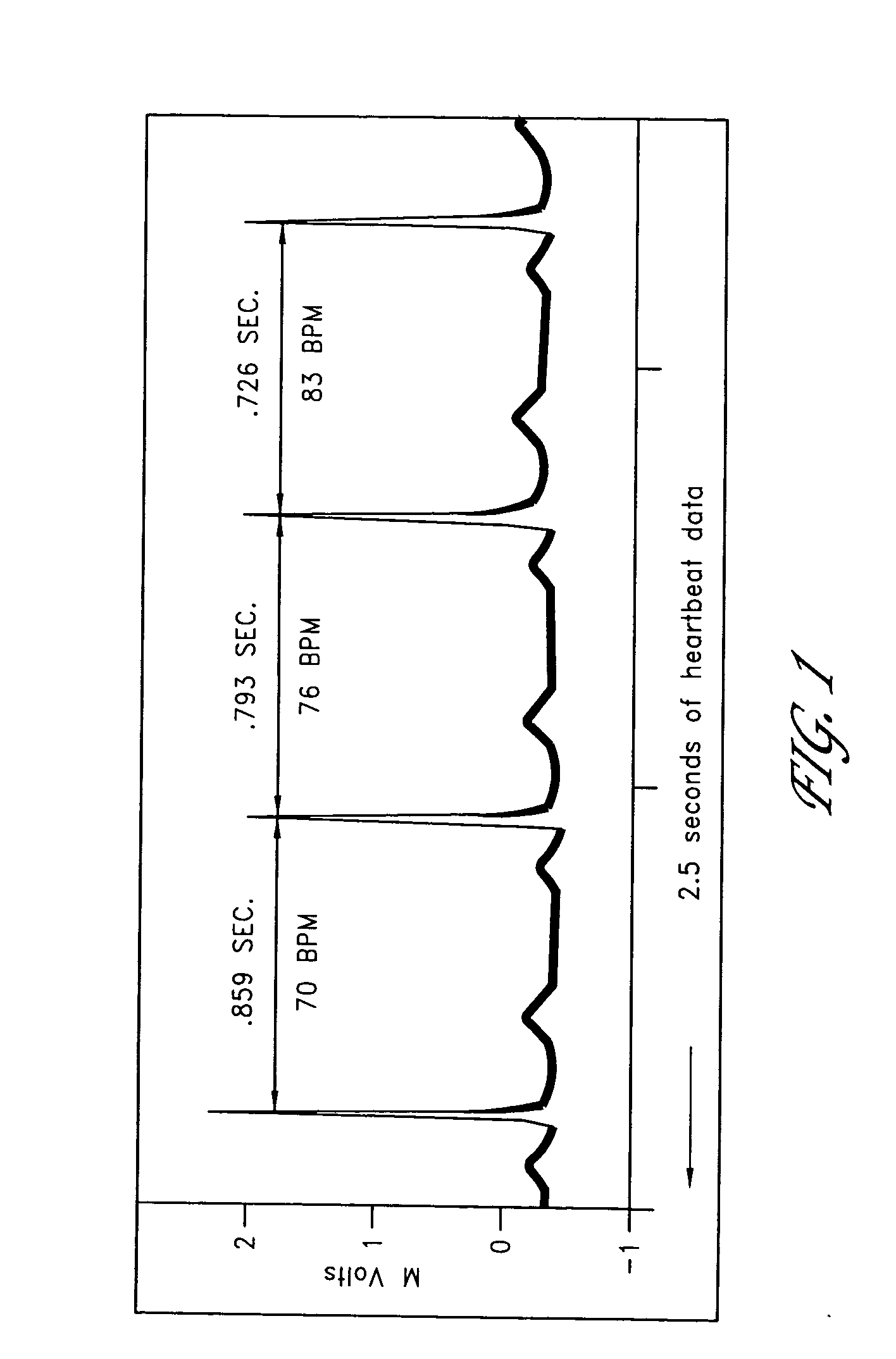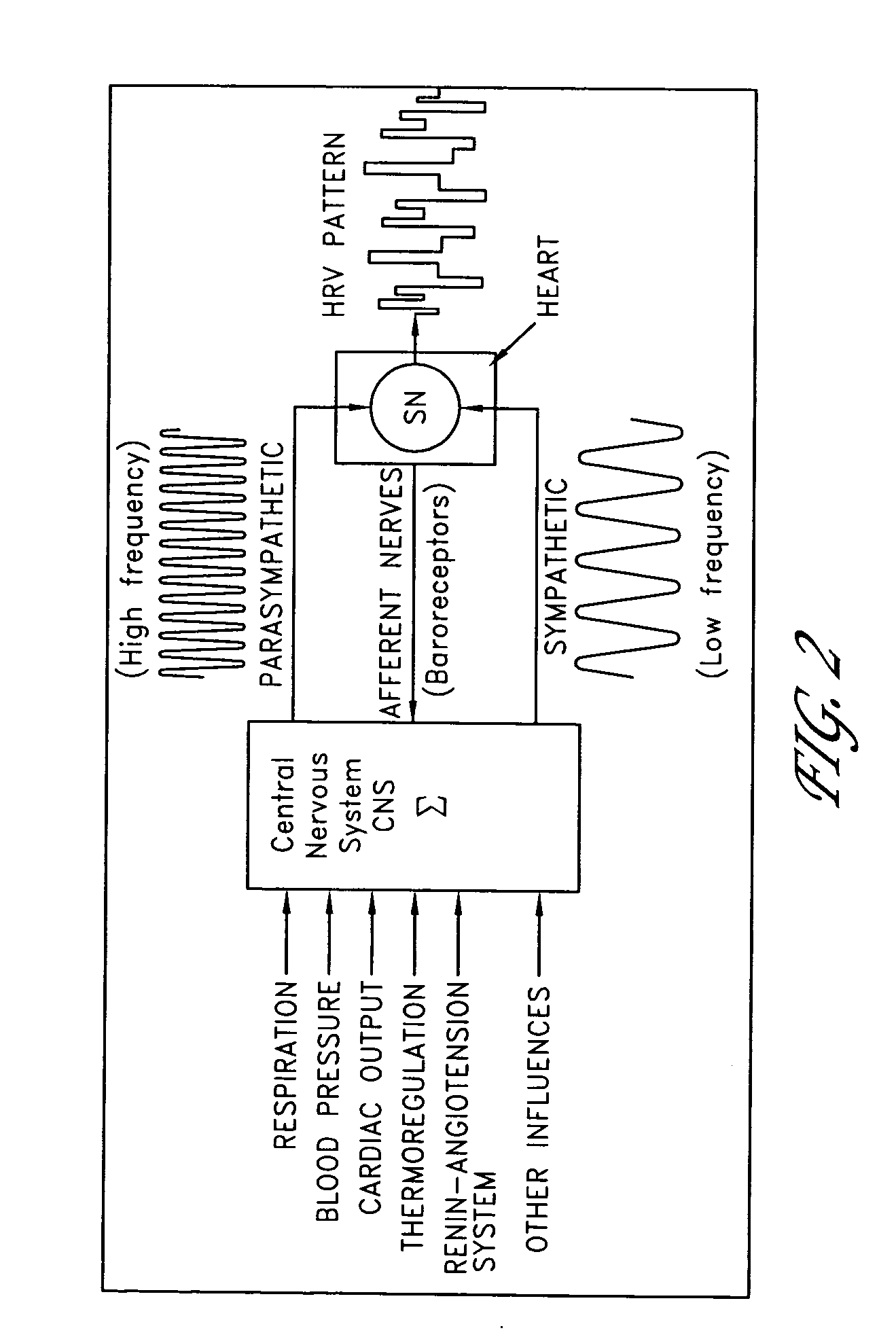System and method for isolating effects of basal autonomic nervous system activity on heart rate variability
a activity technology, applied in the field of heart rate variability measurement, can solve the problems of unanticipated and undetected arousal of clinicians and scientists looking to isolate the effects of basal autonomic nervous system activity on hrv, data collection technique is susceptible to undetected ans arousal, and data collection technique is often time-consuming and expensive. achieve the effect of higher sdnn values
- Summary
- Abstract
- Description
- Claims
- Application Information
AI Technical Summary
Benefits of technology
Problems solved by technology
Method used
Image
Examples
example 1
Determining the Effects of the ANS Arousal on HRV
[0066] In this Example, the precise time window in which an ANS arousal has occurred is determined using method 500 by monitoring SCL and Skin Temperature using any of the monitors 300, 300′, 300″. However, in the description set forth below, it is to be understood that although only the monitor 300 is specifically referred to, the other monitors 300, 300″ can also be used in the same manner described.
[0067] First or baseline sets of HRV data and ANS activity data can be collected concurrently in steps 502 and 504, respectively. In steps 522 and 524, second sets of HRV and ANS activity data can be acquired concurrently, and in step 534, the first and second sets of ANS activity data are analyzed to determine if ANS arousal has occurred. If ANS arousal has occurred, in step 542, HRV data for this time window is analyzed and compared to baseline data to determine the effects of ANS arousal on HRV.
[0068] Successive time windows can be...
example 2
Determining a Recommended Minimum Extent to Which a Timed HRV Study can be Extended After an ANS Arousal
[0081] The time period during which HRV data is affected by ANS arousal can be isolated and determined as discussed above in Example 1. In the present Example, the affected data is not utilized in the HRV data analysis and is eliminated. In order to collect a full data epoch (typically five minutes) in the minimum amount of time, data collected before the ANS arousal and after the end of ANS arousal, for example, as identified in Example 1, are combined and analyzed. In some embodiments, standard signal processing techniques are used to eliminate sections of either or both of the pre-ANS arousal or post-ANS arousal data. The resulting data are aligned such that the frequency content of the combined data is not different from either of the pre- and post-ANS arousal regions. Thus, the recommended extension of time to the standard five minutes can equal the time from the beginning o...
example 3
A Generalized Data Analysis Method for Analyzing the Effects of ANS Arousal on HRV
[0082] This Example is similar to Example 1, except the subject is subjected to one or more protocols designed to induce one or more ANS arousals. For example, the protocols noted below can be used to cause an ANS arousal for the step 512 of the method 500. Suitable protocols are known in the art, for example, an orthostatic test in which the subject first lies in the horizontal position, and then elevates to the standing vertical position. Another example of such a protocol is one in which the subject is instructed to visualize or describe a traumatic event. By simultaneously monitoring the HRV along with one or more other physiologic parameters, as discussed above, and analyzing the results, the effect of ANS arousal on HRV can be determined. Examples of suitable data analyses include: (1) the post-processing elimination of ANS arousal and the isolation of the effects of basal ANS activity on HRV, (...
PUM
 Login to View More
Login to View More Abstract
Description
Claims
Application Information
 Login to View More
Login to View More - R&D
- Intellectual Property
- Life Sciences
- Materials
- Tech Scout
- Unparalleled Data Quality
- Higher Quality Content
- 60% Fewer Hallucinations
Browse by: Latest US Patents, China's latest patents, Technical Efficacy Thesaurus, Application Domain, Technology Topic, Popular Technical Reports.
© 2025 PatSnap. All rights reserved.Legal|Privacy policy|Modern Slavery Act Transparency Statement|Sitemap|About US| Contact US: help@patsnap.com



